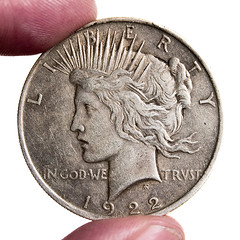Having just spent a couple of weeks overseas, I am left to mourn for our currency. You might think that’s strange, or that I should have more important things to mourn about (I do). But dealing with the current conversion rate and seeing the horrible purchasing power of our nation’s currency leaves me frustrated and worried for our fiscal future.
Apart from those who watch the dollar index and financial reports, most Americans have yet to feel the damage from the devaluating dollar. Sure, gas is more expensive, groceries have gone up a bit, and some shortages are occurring. But contrary to what some believe, price inflation is not inflation itself, but the result of real inflation—the introduction of new currency into the market. Thus, while some believe that inflation is when prices go up, that is only the byproduct of what’s really going on.
The easiest way to see the result of inflation is to change markets—in other words, move into a different currency and see what you can get. Price inflation in any market is usually a slow trickle that takes a while to make itself visible in every aspect of the economy (one notable exception, of course, is hyperinflation, which everybody knows about the minute it occurs). But moving your currency into a different one forces you to exchange it at the current market value and either enjoy a deflated target currency (if, say, you’re moving euros into dollars) or suffer from an “expensive” target currency (going the other direction, dollars to euros).
Ever-historic lows for the dollar mean that you’re having to pay more and more for the same items. Buying anything abroad will ultimately be more “expensive” in the short term, since you’re sometimes still able to buy the items for less cost at home where the price inflation has yet to trickle down.
As I observed the prices of various items and services on my vacation, I was left to cringe each time I would multiply the price by two to see what the cost was in terms of dollars.
The future of the dollar is grim. This is nothing new (I’ve been trumpeting this line for a long time), but it bears repeating. As the dollar rapidly and steadily declines in value, it becomes necessary to look for alternative currencies and commodities for long term value investment and storage.
We can point fingers all we want (I do often enough—the Fed, the current and previous administrations, Congress, etc.), but things aren’t likely to change any time soon (especially since those proposing serious and much-needed change are pushed to the fringe and ignored). Thus, the best thing we can do is prepare and act as best as we can within the circumstances allotted us.
I mourn the dollar and the erosion of our hard-earned savings. I mourn the legalized theft and secretive inflationary tax that allows powerful men to confiscate wealth and create money out of thin air. But most of all, I mourn the state of amnesia and ignorance in which the majority of Americans live. They will suffer the most, when things really escalate and they are unable to prepare any longer.
Fare thee well, dollar.
Continue reading at the original source →




